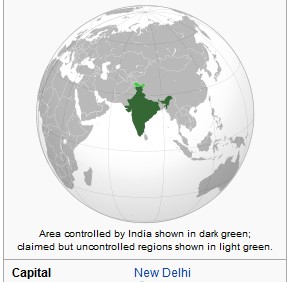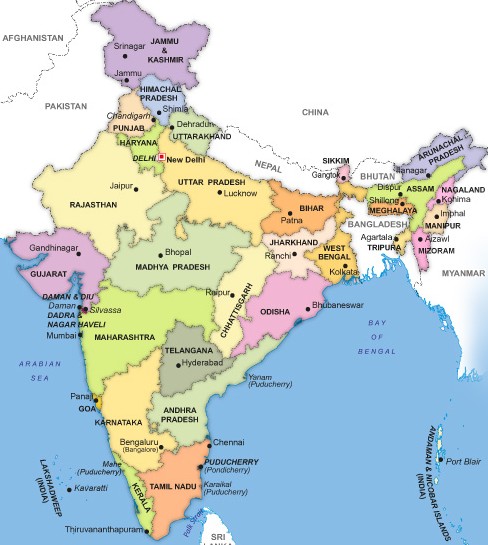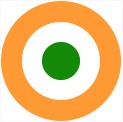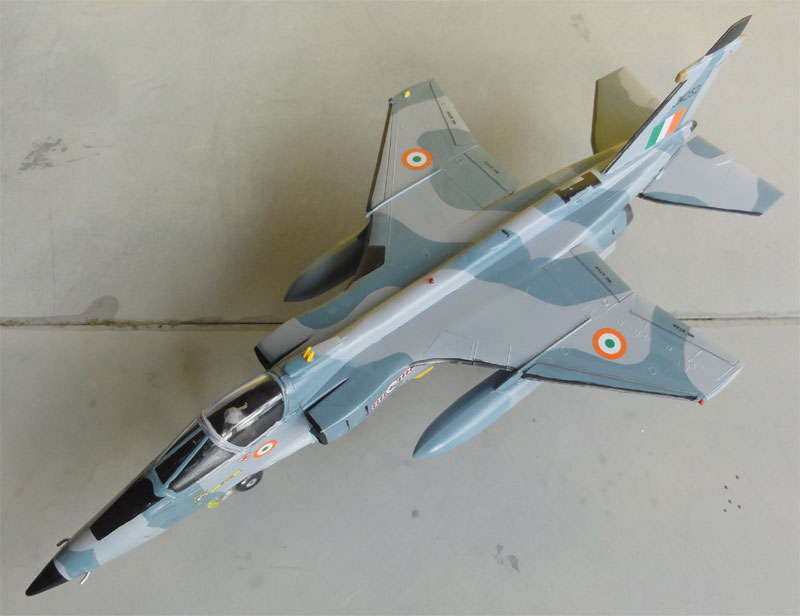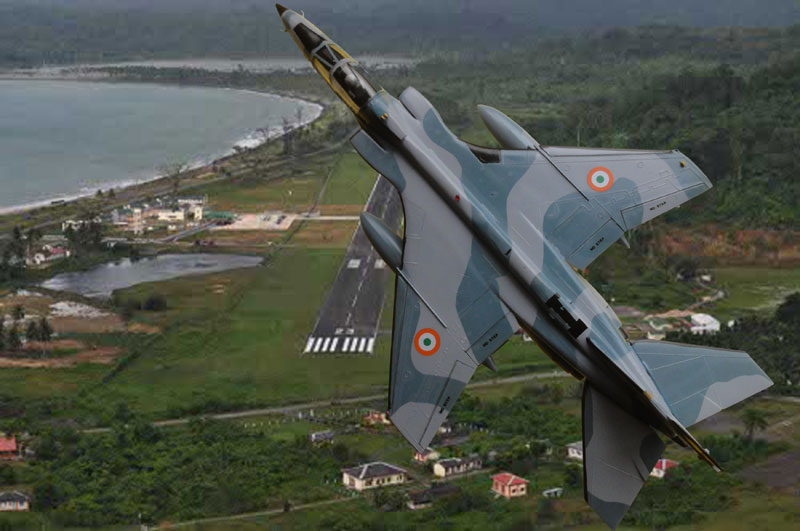[ Heller 1/72 kits ]
Sepecat Jaguar models in 1/72 scale" using old HELLER kits from France
page 5
... back to Jaguar page 1....

I also had a couple of old Heller
Jaguar kits in 1/72 scale. Kit Ref #263 has about 50 parts and was an
old
fashion kit with several options for a single seater Jaguar "A
francais", "B anglais" or two seater "E". The nose parts are
separate.
The panel lines are not engraved but
raised as this is an old kit. The undercarriage is rather basic and the
airbrakes are moulded closed. The Heller kit has no stores such as fuel tanks
nor pylons.
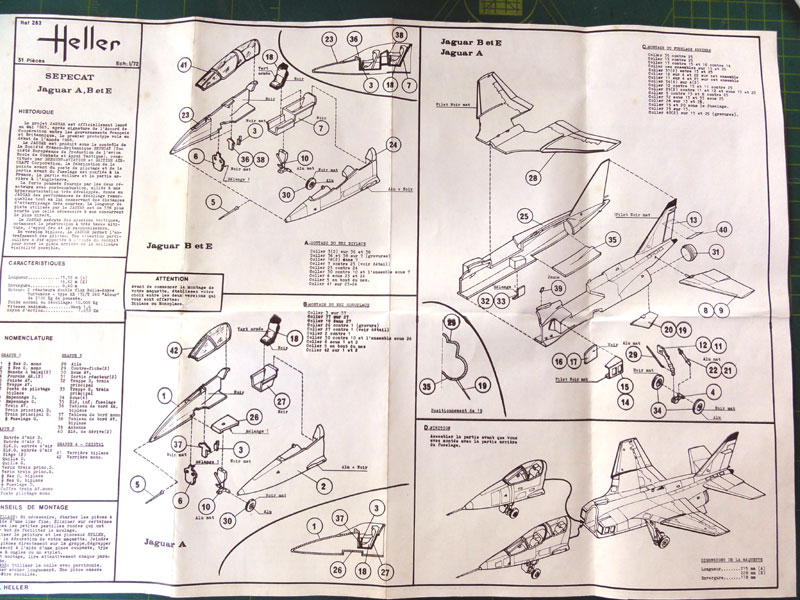
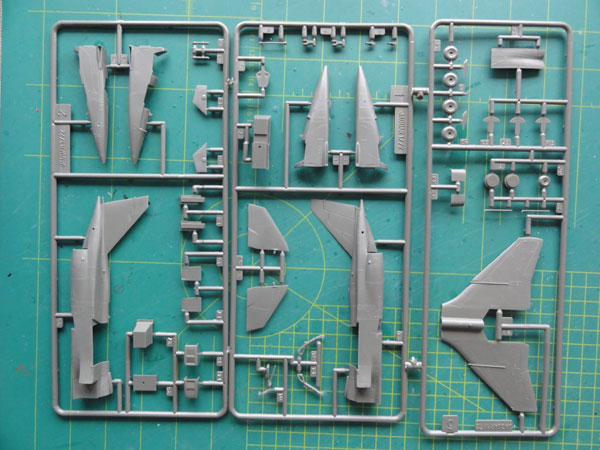 .
.
The same Heller kit was released
later in several boxes but here as French "A" single seater, such as
this one...
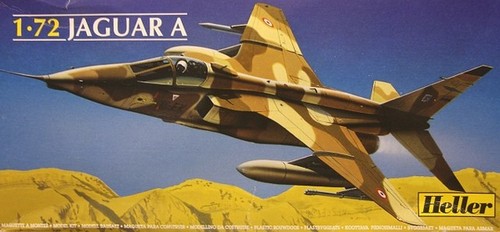 ..
..
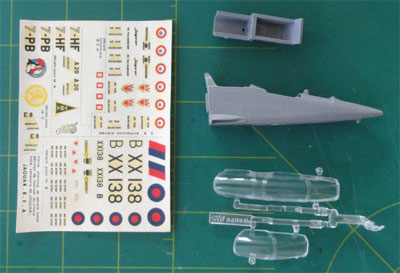
The old kit decals are better replaced,
and the roundels are printed "off center"
OK, what to do with my pile of
old Heller kits?
Although the later released Hasegawa
Jaguar kits are much better with fine engraved panellines and shapes,
I decided to make my old Heller kits nevertheless. The idea is to make
special variants and conversions of these kits: Jaguar "M naval" prototype
and Jaguar International IM "India".
The Heller kit assembly is straight forward when the panellines are kept and raised (so not re-inscribed). The wing is one piece although parked Jaguars often show the slat drooped down a bit and the flaps lowered. The airbrakes aft of the gear also droop down but are on the kit moulded closed.
Start building....
The kit cockpit is very simple with
tub, control stick and one piece seat. The two seater has obviously two
of those and another tub and a single piece double long canopy. The nose
wheel bay misses a "roof", this was closed up with plastic card.
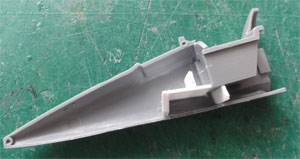
The smaller nose door on the nose
gear strut is missing. Make from card (not seen here).
The kit instructions let you set
the main undercarriage legs under a wrong angle. Cut away some plastic
at each strut (parts 11 / 12) base point. The leg should be straight down
vertical and the wheel boogie at about 80 degree angle tilted (almost horizontal
parallel to the ground). As compared to the Hasegawa kit, the "track" is
a bit smaller on these Heller kits. I was not sure what was correct, simply
"assuming" that aircraft stores fitted and loads play a role here.
The inside shape of the opened main gear bay is a bit inaccurate at where the legs meet the bay but that is not easily seen. The small gear doors (parts 32 / 33) must be adapted a bit in shape with a knife to look better with a removed quarter. (The large main gear doors are moulded closed in the Heller kit but that is OK for most Jaguars parked as well as these doors close after gear deployment).
I deepened the exhausts so opened
up the exhaust parts 31 and installed a deep tube made from old spare box
fueltanks from scrap. It was painted black.

The ventral fins (parts #19 / 20)
on the Heller kit are far too big but that is easily corrected by
removing a strip of 2 mm wide at their base. A simple correction that vastly
improves the looks of the Heller Jaguar model.
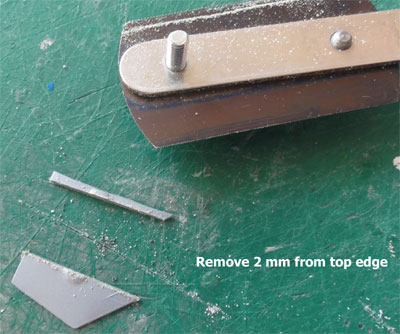
The real Jaguar intakes' spring loaded doors are a bit open on the kit parts #14 / 15 . You may fill these as these doors are closed most of the time for parked and flying Jaguars. I think they only open up when the Adour engines are started.
The thick tail antenna parts #40 are
better replaced with thin card. Note that these are not seen on all Jaguars,
check photos for the desired version.
Page 1
Page 2
Page 3
Page 4
Page 5
Page 6
Page 7
Page 8
Page 9
[7] Jaguar "International IM" India
The Jaguar International IM is used
by India for their land based maritime strike force.
I had a nice decal sheet of Model
Alliance set 72138. It has decals for no. 6 squadron "The Dragons"
as based at Puna or so called Poona Air Base in India, 2001. (The reference "World Air Power"
Volume 11 has a nice drawing on page 67).
This Jaguar has a special nose with the specific AGAVE radar. These Jaguars were also capable of firing a Sea Eagle
"look alike" missile for anti-ship missions. A nice change as compared
to the other Jaguar models.
Again, a Heller kit was made. First, the fuselage with wing was assembled and the overall kit....
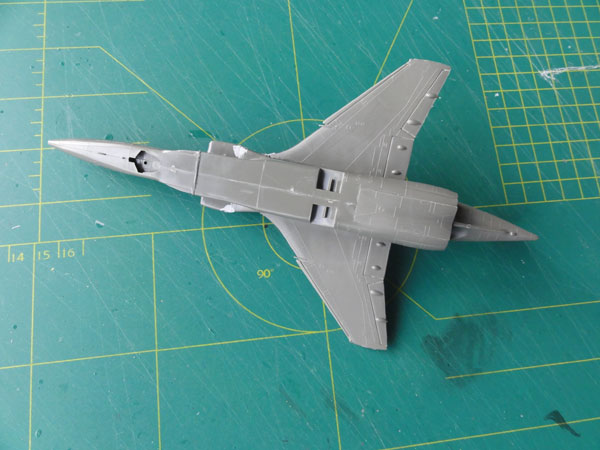
... and putty added with after that
sanding. I tried to limit the sanding to retain the raised panellines.
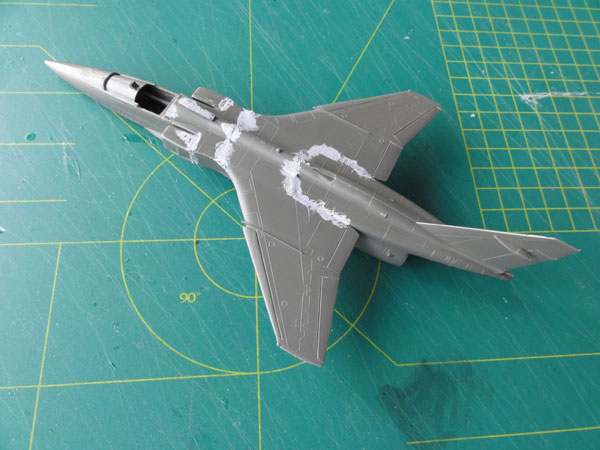
....and next airbrushed was a base
grey coat in places to check for any errors. Still some work needed....
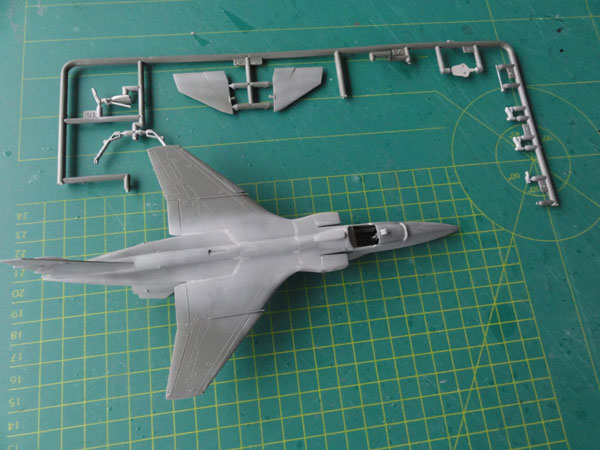
This Heller kit will be made "as
a Jaguar IM with engine running and pilot in the cockpit". So airbrakes
are "up" as well as flaps and slats "up" (as per kit). Intake side doors are
as per kit, so slightly open for engine running. Here the kit vertical
tail is still seen, to be removed later.
Next, the Heller nose as needed for the "IM" specific AGAVE radar nose was adapted. I used the nose of a drop tank found in the spares box with correct shape and diameter. I could not identify which kit it came from, is it from a Tornado? Cut off the kit nose with a TIGER razorsaw.
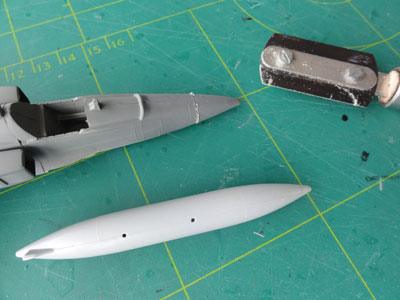 .
. 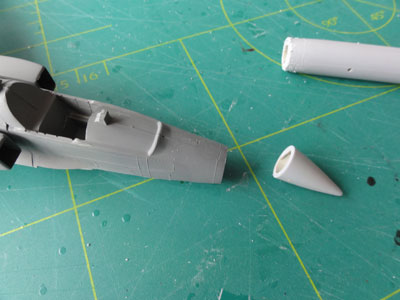
Set the new nose in place and use
now putty to get a smooth result.

The IM vertical tail has the RWR
fairings at the tail, but for the Indian DARIN-I. Fortunately I had a spare vertical tail from a Hasegawa
Jaguar kit and this was used after cutting off the Heller kit tail. 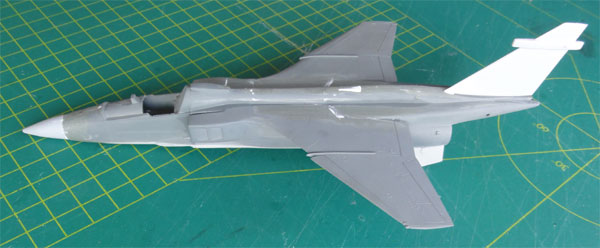
The model was further assembled as
per Heller instructions but without the details yet like the undercarriages.
Putty was applied and when dried sanded as needed.
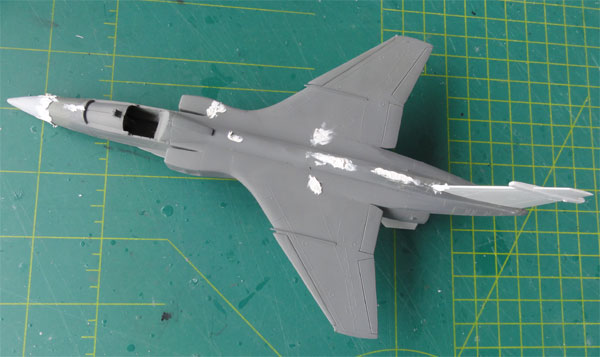
Than the model got a light grey base
coat and some corrections were needed. Some putty was again needed as seen
and the model sanded.
The model is ready to get its India "IM" "disruptive grey" colours. It was quite difficult to establish the colours needed with contradicting sources and quotes like "Flint grey or Barley grey or Light Aircraft Grey". I looked at various photos, Indian IM Jaguars seem to have a blue sheen. These colours were picked:
- Mid grey : approx BSC 626 using
Gunze
Sangyo H308 (approx FS36375) acrylic; this looks quite like "Light
Grey";
- Dark grey/blue: a mix of
80% Gunze Sangyo H335 (BSC 637 medium grey) + 20% Gunze Sangyo
H25 intermediate blue;
Make sure to keep some of the fresh mixed paint in a closed container for later touch up work like on the canopy frames and other parts.
I also airbrushed two large underwing
fueltanks obtained from a Hasegawa kit with their pylons. Their pylon locating
pins were cut off to get a clean fit later on.
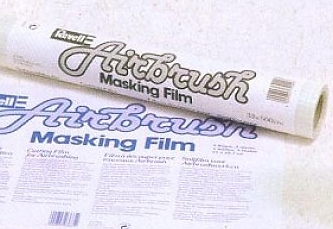
Next started with the mid grey airbrushing
that. Than mask with low tack "masking" film like from Revell (or tape
and paper if you have those). Next the Dark grey/blue. .
.
 .
.
With the result... Slight variations
in the colour application themselves suggested a "used aircraft".
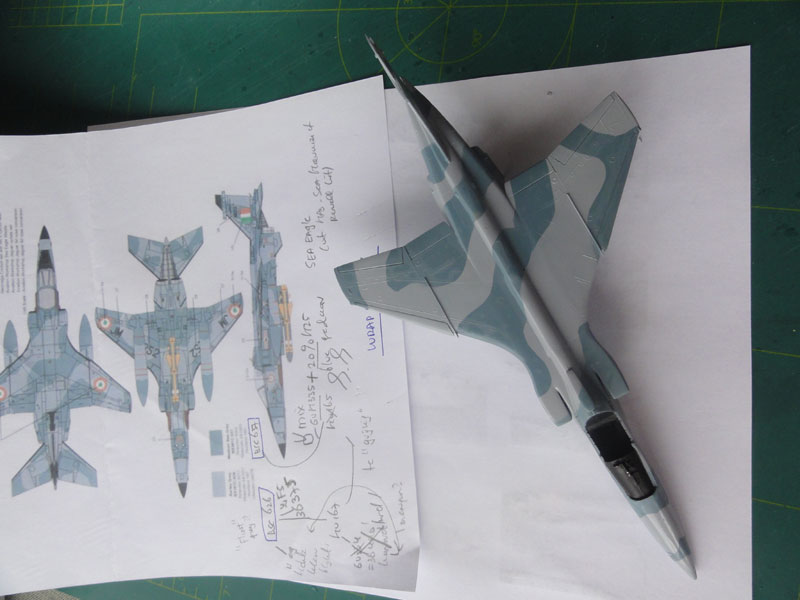 .
.
The gear bay interiors got painted
"zinc chromate yellow" using White Ensign ACUS23 enamel. Note the airbrakes
that are moulded closed.
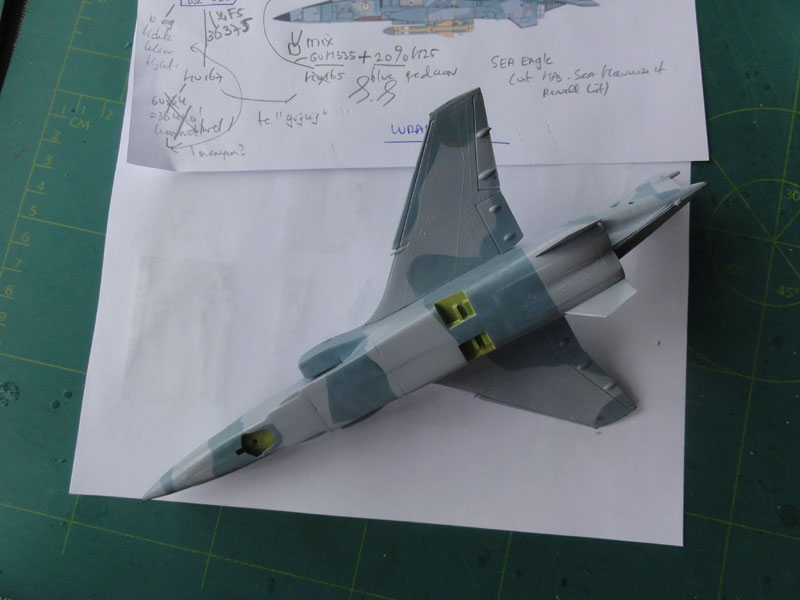 ..
..
Time for decalling!
The Model Alliance set 72138
decals are fine. These were applied after the model got a gloss varnish
coat using
Johnson Future / Pledge
with the airbrush. The INDIA roundels are separate decals to ensure they
are not printed "off center".
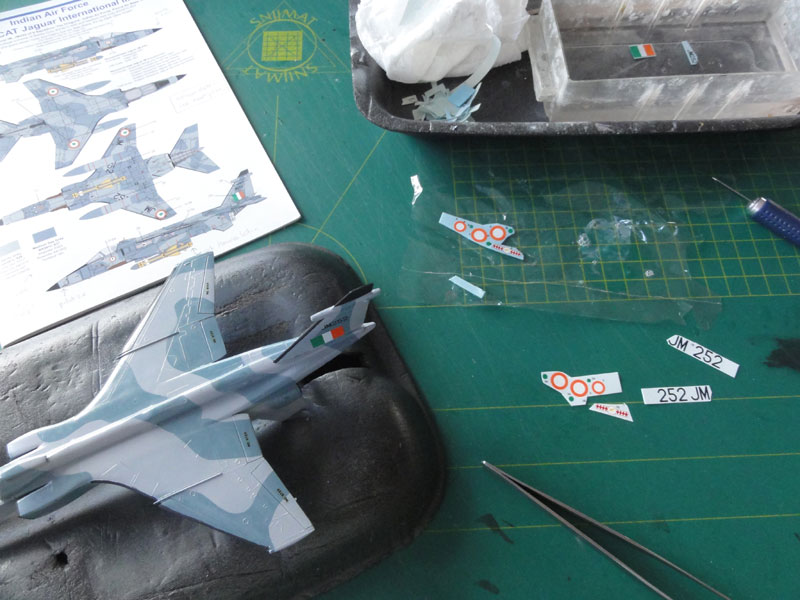
The anti-glare panel was made with
a decal. The leading edges were hand painted black with a fine brush, a
tedious work and needing a very steady hand. NO STEP markings were found
in the decal spares box.
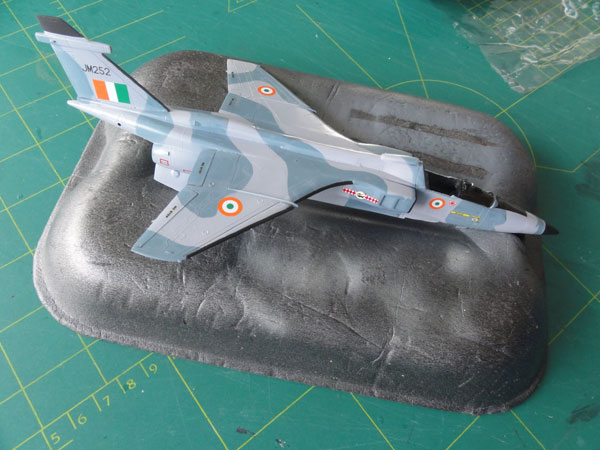

The undercarriage fitting was done
as noted above with some changes....
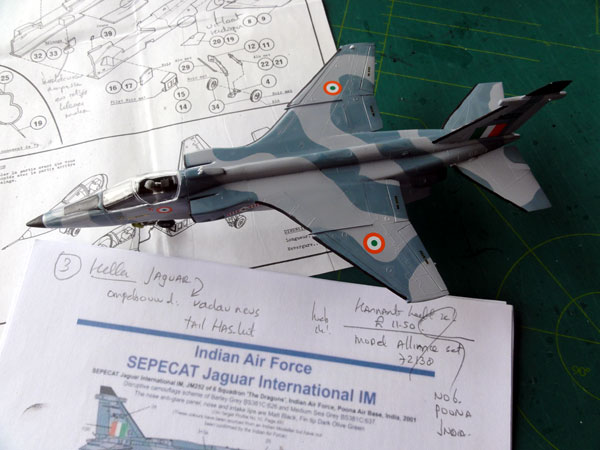
I saw later that a black antenna
panel was at the inner upper starboard wing, this was hand brush painted.
Also, the rear end of the fuselage was black.
Now, it was time for completing the model.
Fitting the tailplanes was straight forward as per kit instructions, ensure a 5 degree dihedral of the tailplanes as on all Jaguars. On the undercarriage legs a few hydraulics lines were set in place made from thin metal wire.
A pilot figure was found in the spares box and set in the cockpit. The canopy was set closed. It fits OK but the tiny gaps were closed with white glue applied with a toothpick. When dried, painted in the appropriate camouflage colours noted above.
The Indian IM carried a
missile looking
like a "Sea Eagle" missile but with a rounder nose and an extra lower
fairing.
A "Sea Eagle" missile was retrieved from a Sea Harrier kit (note that
India used Sea Harriers from their carriers), e.g a kit from
Revell or Hasegawa. The missile got an extra fairing, its' head sanded
round and a basic paint coat of yellow with dark grey panels. Maybe it
was used in this scheme for trails, I am not sure. A lot of work with
masking
and painting but worth the effort. I used a central spare pylon from
the
Hasegawa kit, part B17 . The rear portion (about 30%) of the pylon was
cut off and looks OK for the "Sea Eagle look alike" missile.
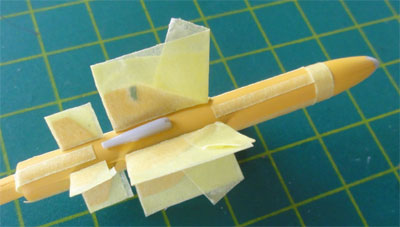
Fuel tanks airbrushed before
were
installed with also the usual loading red stripes as per kit decals.
Note that the Indian fuel tank stencils are different than on RAF
Jaguars.
The final smaller antennas were set in place, made from thin card as well as 2 nose pitots that on the "IM" are at different location as usual on Jaguars. They are a bit different in shape as well as compared to those on the RAF Jaguar Gr.1.
The anti-collision lights on the wingtips were painted red (port) and blue (starboard) and a drop of Micro Kristal Kleer added when dried. The larger red anti-collision lights on the spine and lower aft fuselage were made from clear red plastic found in the spares box.
The model got a final varnish clear coat using again Johnson Future/ Pledge with the airbrush. This gives a nice gloss even sheen as used on naval aircraft and protects the decals from drying out for the future.
That completed the Jaguar IM of India as based at Pune / Poona Air Base, India of no. 6 squadron "the Dragons".
[ 3,170,000 sq.km | capital: New Delhi | > 1,300,000,000 inhabitants | GDP US$ 2,100 per capita ]India became completely independent in 1947 as Dominion India and as republic in 1950. The World's secondly-mostly populated country on the sub-continent stretches from the Himalayas to the south and hundreds of languages are spoken.
Military aviation started in the British empire in the 1930s with an auxiliary force with Wapiti biplanes. After independence, in the India Air Force "Bharatiya Vayu Sena" the first aircraft were former British aircraft like Vampire and Canberra. From the 1950s there were various border conflicts with Pakistan and China and other aircraft operatewd were Folland Gnats, Hunters and from France also Ouragans (called "Toofanis") and later from 1957 at least 100 Dassault Mystere IVA jets. In the 1960s India Canberras supported the UN mission in Belgian Congo and in 1961 Portuguese Goa on the west coast was attacked as India wanted this to be part of India. In the 1970 there was an "East Pakistan" liberation war that would become Bangla Desh. Indo-Pakistani Wars were fought in 1965 and 1971.
India also started buiding up an aviation industry in the 1960s with Hindustan Aeronautics (HAL). Some aircraft were made in license like the local Ajeet single seat version of the Folland Gnat and other aircraft were the Marut. But also aircraft were ordered from the Soviet Union USSR and includes transports like Antonovs.
Various Mikoyan MiG-21 aircraft were acquired of various types starting with the MiG-21 F13. Soon Hindustan Aeronautics Limited (HAL) in built in license the MiG-21 starting at HAL in Nasik in 1966. Between 1966 and 1972 over 200 MiG-21FL were produced starting from sub-assembly kits. After 1971 the MiG-21M was produced until end 1981 with about 150 delivered. It was followed by the MiG-21bis with about 300 built.
In the 1970s it was decided to order Sepecat Jaguars IS/IT/IM for deep strike roles as the Hindustan HF-24 Marut project had difficulties. Some 16 first GR.1 and T.2 trainers were drawn from British RAF stocks. The Jaguar was adapted for India with the version IS and IB with some 30 IS and 5 IB trainers delivered from 1981. The Jaguars were first based at Ambala.
Jaguars were also locally license manufactured by HAL and known as the "Shamsher" with some 69 IS and 10 to 27 IB. The ECM system was the DARIN-I, mostly seen from outside in the vertical tail fairing. For the maritime strike role the Jaguar IM was developed fitted with the French AGAVE radar and capable to fire the Sea Eagle anti-ship missile.
In the 1980s modernization also involved acquiring MiG-23 / 27 and MiG-29 Fulcrums and Mirage 2000. Training is done with PC-7, BAe Hawk and the older local Kiran trainer jets. In more recent years more Russian aircraft were put into service wit various Sukhoi SU-27 / SU-30 of the Flanker family. There is also a large transport and helicopter fleet with Antonovs and Mils but also C-130 transport but also the local designed Druv helicopter.
Probably from 2005 the new Jaguar IS were manufactured by HAL with the DARIN-II and new systems; the DARIN-II system has 2x2 knobs at the fairing and also small fairings near the rudder base.
Decades later still upgrades were done on the MiG-21 with from 2014 the MiG-21 "Bison": it got the new Kopyo radar and Vympel R-27 and R-73 air-missile and these are currently in Indian service.
Currently the different "commands" operate some 40 air bases. Jaguars are stationed at Ambala north of New Delhi with no 5 and 14 squadron, no.16 squadron at Gorakhpur in the north east and the Jaguar IM at no.6 squadron at Pune/ Poona near Mumbai and later Jamnagar at the north west coast. The Mirage 2000 is based at Gwalior south of New Delhi. The Sukhois are operated from various bases and even the MiG-21 "Bison" is still used.
The Indian naval aviation has supported also operations from Indian aircraft carriers like the INS Vikrant (originated as HMS Hercules but sold to India in 1957), INS Viraat (ex HMS Hermes acquired in 1987) and some 28 Hawker Siddeley Sea Harriers were acquired. Breguet Alize surveillance aircraft were also deployed. Well known are also the Tupolev TU-95 / 142 Bear maritime patrol aircraft and IL-38 but probably now their role taken over with dozens of shore based Do-228 patrol aircraft of also the Indian Coast Guard. The Vikrant was de-commissioned in 1997 and the Viraat in 2016 along with the Sea Harriers. Current naval operated types are helicopters like the Westland Seaking and Kamov Ka-25, Ka-28 and Ka-31. Large P-8 Poseidons are also operated and the big naval air base is at Arakkonam near Madras at the east coast and at Dabolim/ Goa on the west coast.
The army of India operates many helicopters like the licensed made Alouette II by HAL called "Cheetah". HAL developed the Druv helicopter though it took many years to develop. Apparently over 200 Druv helicopters are used by the Indian armed forces.
Conflicts with Pakistan still exist in the Kargil / Kashmir region and regularly shots are fired.
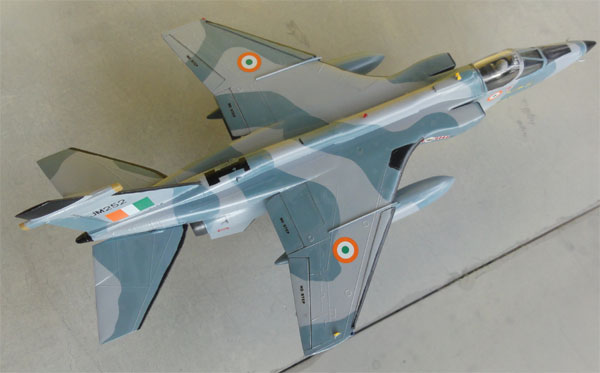
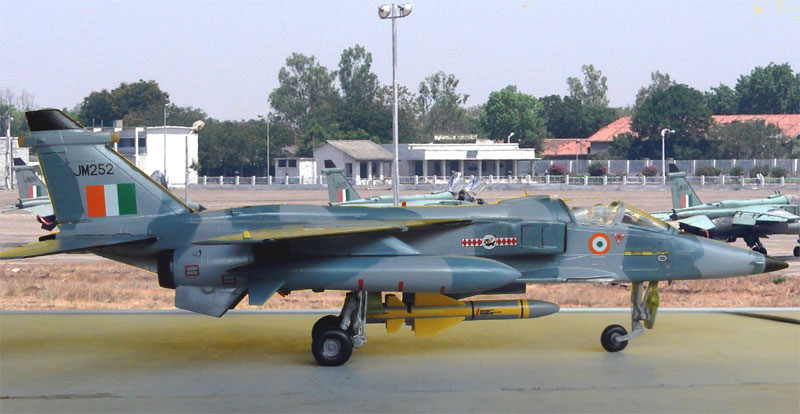
At Pune / Poona air
base some 100 km east of Mumbai to protect the west shores.
... and over Mumbai
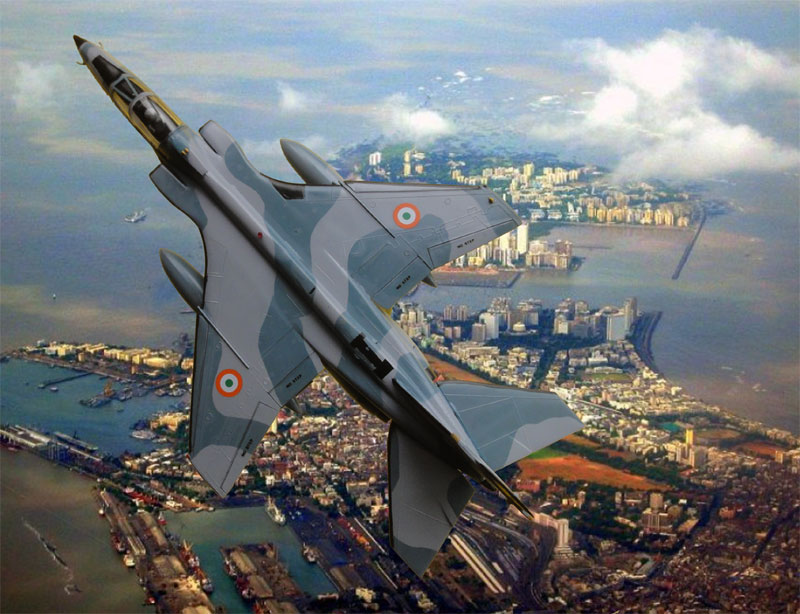
To next [
Jaguar
Page .... ]
Back to 1/72 models

(c) Copyright Meindert "designer"/ All rights reserved. Your comments are welcomed by webmaster
Created this page
November 11, 2015;
updated May 2018
